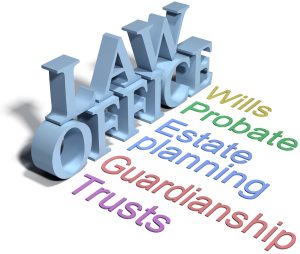 A decedent’s estate consists of many different types of interests and assets. These items may include bank accounts, security or other financial accounts, real estate interests, various retirement accounts such as individual retirement accounts, pensions and 401(k) plans, and business interests in partnerships or limited liability companies. There can also be interests in creative works, trademarks and copyrights.
A decedent’s estate consists of many different types of interests and assets. These items may include bank accounts, security or other financial accounts, real estate interests, various retirement accounts such as individual retirement accounts, pensions and 401(k) plans, and business interests in partnerships or limited liability companies. There can also be interests in creative works, trademarks and copyrights.
At the inception of an estate, a determination must be made as to whether a Last Will and Testament exists which needs to be probated. In the event there is no Will, then letters of administration would be required to settle the estate under the intestacy statutes. The appropriate proceedings must be filed in the Surrogate’s Court. In either case, a fiduciary is needed to have the authority to handle the estate assets. Assets that are owned by a decedent in his name alone pass through the estate. When an asset has a named beneficiary or a joint owner with survivorship rights, these items are distributed directly to the other named party.
A fiduciary, whether an executor or administrator, has various powers and authority regarding estate affairs. The Estates, Powers and Trusts Law Section 11-1.1 entitled “Fiduciaries’ Powers” provides a detailed list of powers. These include powers to take possession of estate property and to sell or dispose of such property.
 New York Probate Lawyer Blog
New York Probate Lawyer Blog











